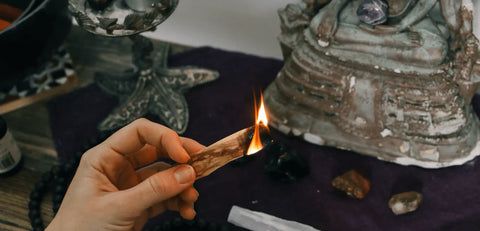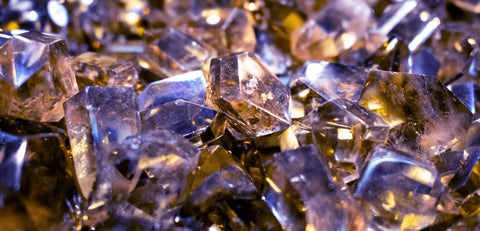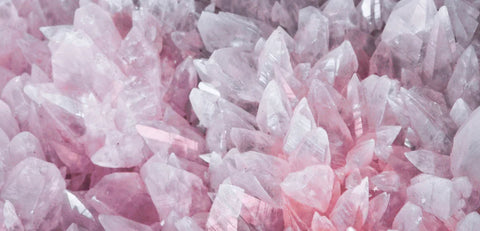
What is the Least Known Stone in the World ?
of reading
Are you passionate about stones and wondering which is the least-known gemstone in the world? Good news: the universe of mineralogy is full of rare and mysterious treasures that few people even know exist. Some stones—almost impossible to find—fascinate collectors with their beauty, unique composition, or surprising history.
Between exceptional gems, forgotten minerals, and recent discoveries, let’s explore some of the most discreet yet equally captivating stones—just as enchanting as the great stars like diamonds or sapphires.
In this article, we’ll explore:
The world’s rarest and least-known gemstones
Why some gems remain almost invisible to the public eye
The secrets that make these minerals so unique and valuable
Ready to dive into the hidden world of mysterious stones? Let’s go!
The Least-Known Stones : Everything You Need to Know

What Is the Cheapest Precious Stone?
Among precious stones, some are considered affordable while still retaining remarkable beauty and charm. Topaz is often cited as one of the least expensive precious gems on the market. Although it comes in many varieties, blue topaz remains the most accessible. Its soft, luminous hue and brilliant shine make it a beautiful alternative to sapphire—at a much lower price.
Another relatively inexpensive gemstone is amethyst. Once rare and highly valued, it has become more abundant, which makes it much more affordable today. Its deep or lavender-purple tones give it a refined and spiritual aura, often used in everyday jewelry. Despite its modest price, amethyst maintains strong symbolism and undeniable aesthetic appeal.
Garnet is also a budget-friendly gemstone, available in a variety of rich, warm reds. Its natural sparkle and durability make it a great choice for anyone seeking an authentic stone without breaking the bank.
In short, the cheapest precious stone depends on the type and quality, but topaz, amethyst, and garnet are among the most accessible options. These gems strike the perfect balance between beauty, symbolism, and budget, proving you don’t need to spend a fortune to wear something elegant and natural.
What Are the Rarest Gemstones?
The rarest gemstones on Earth are those that form under exceptional natural conditions, in extremely limited deposits, and with complex extraction processes. These fascinating gems are prized for their unique colors, purity, and absolute rarity—making them true treasures for collectors and jewelers alike.
Among them, painite is often cited as one of the rarest known minerals. Discovered in Burma in the 1950s, it was once so unique that only two crystals were known to exist. Even today, painite remains extremely difficult to find and commands very high prices on the market.
Another extraordinary gem, taaffeite, was discovered by accident in 1945 when a gemologist realized that what he thought was a spinel was actually an unknown mineral. With colors ranging from pale violet to lilac, this stone is about a million times rarer than diamond.
Musgravite, found in Australia, also belongs to this exclusive circle of rare gems. Related to taaffeite, it is admired for its gray-green tones and stunning brilliance. Grandidierite, discovered in Madagascar, is another exceptional stone—its translucent blue-green hue makes it highly prized for its subtle beauty and rarity.
Other rare stones include benitoite, serendibite, and poudretteite. Each is found in minute quantities, sometimes in just one location in the world. These exceptional gems remind us that nature still hides many mysteries—and that some stones, however discreet, can surpass even diamonds in rarity and value.
Which Stones Are Not Considered Precious?
Not all beautiful stones are classified as precious gemstones, even though many possess great beauty and admired qualities. In gemology, only four stones are officially recognized as “precious”: diamond, ruby, sapphire, and emerald. All others, no matter how beautiful, are known as semi-precious stones (or fine stones).
Stones like amethyst, topaz, garnet, citrine, and aquamarine are considered semi-precious. They tend to be more affordable while offering a wide range of colors, shapes, and spiritual meanings.
Many well-known stones in lithotherapy, such as labradorite, malachite, turquoise, and tiger’s eye, are also not considered precious. They are valued more for their energetic and aesthetic qualities than for rarity or market value.
In short, a stone isn’t considered precious not because it lacks beauty, but because it doesn’t meet the gemological standards of rarity, purity, and prestige. Semi-precious stones—though more common—remain deeply fascinating and sought after, whether for their radiant colors, spiritual properties, or use in creating expressive, unique jewelry.
What Is the Least-Known Stone in the World ?

In the fascinating world of mineralogy, some gemstones are so rare that even enthusiasts barely know they exist. Among them, painite is often regarded as both the least-known and the rarest gemstone in the world.
Discovered in the 1950s in Burma, it was so unique that only two specimens were known at the time. Its complex chemical composition and brownish-red to orange color make it distinctive, yet its rarity keeps it nearly invisible on the market. Even today, painite is considered a true geological treasure.
Poudretteite – A Delicate and Hidden Gem
Another extremely rare and little-known stone is poudretteite. First discovered in Canada, in the Poudrette quarry near Montreal (which gave it its name), this transparent gemstone with soft pinkish reflections was long overlooked due to the scarcity of usable samples.
It wasn’t until the late 20th century that it was officially recognized as a distinct gem. Its purity, lightness, and delicacy make it as beautiful as it is inaccessible, since it is extremely difficult to find in nature.
Serendibite – The Almost Mythical Stone
Among the world’s most obscure gemstones is also serendibite, an extraordinarily rare gem discovered in Sri Lanka. With colors ranging from deep green to dark blue, it is so difficult to extract that only a few carats have ever been cut since its discovery.
Its name, derived from “Serendib,” the ancient Arabic name for Sri Lanka, symbolizes luck and unexpected discovery. Very few people have ever seen one in person, making it a near-legendary stone.
Hidden Natural Treasures Yet to Be Found
Most of these stones are unknown not only because of their rarity, but also because they exist only in microscopic quantities or in very remote areas. Many gems have been identified only recently, thanks to scientific advances and modern mineral exploration.
This proves that there are still mysterious gemstones waiting to be discovered. The world of minerals remains a realm full of secrets—where true beauty often hides within the most discreet stones.





![What Stones Should You Put in Your Home ? [GUIDE]](http://lithotherapystore.com/cdn/shop/articles/Sauge_480x480.png?v=1753884577)